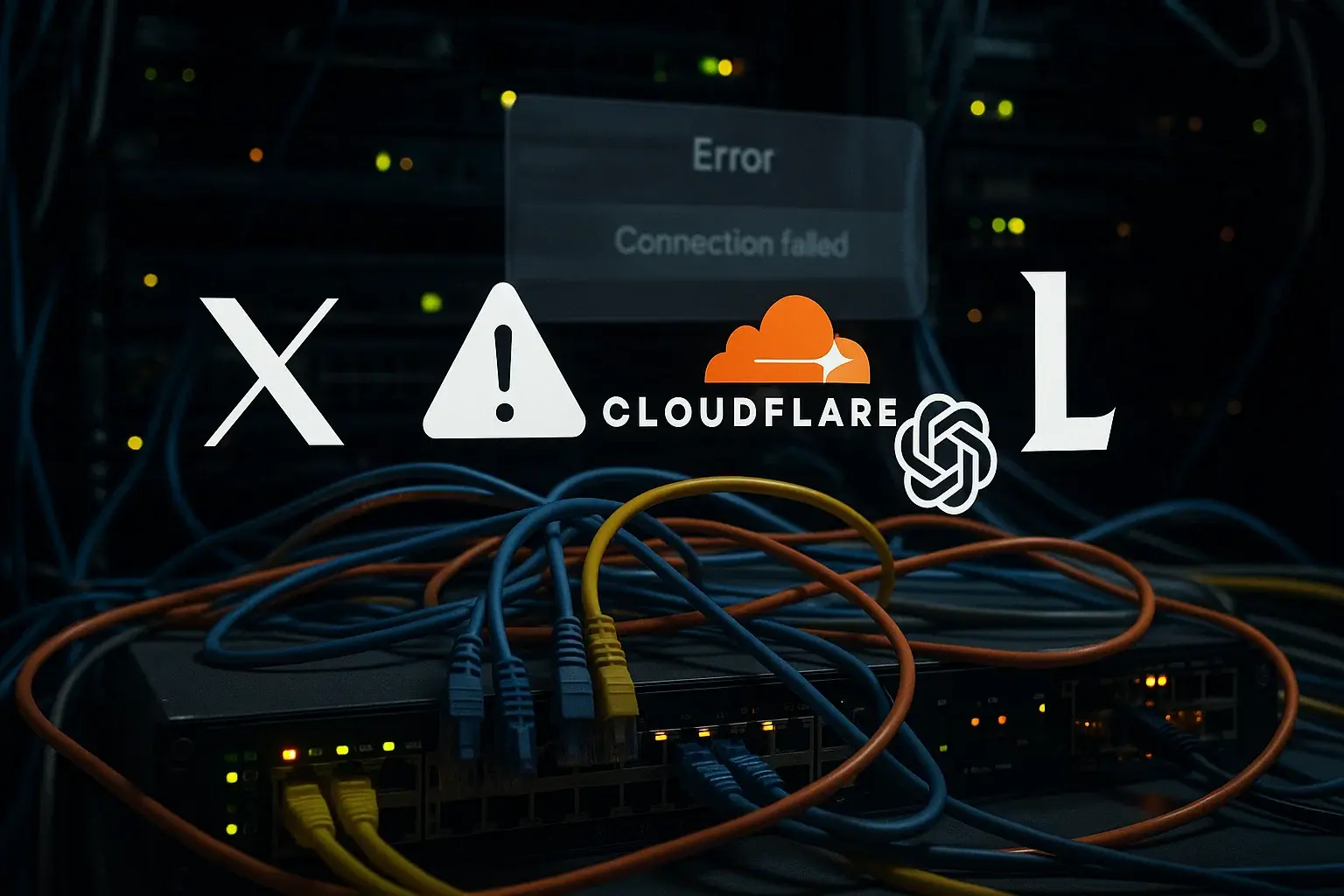Today, November 18, 2025, you may have felt like “the internet is broken.” You couldn’t access X, ChatGPT was throwing errors, League of Legends wouldn’t connect, Canva failed to load, and even news sites showed strange messages.
But the issue wasn’t your modem, your ISP, or your device—it was Cloudflare, one of the most critical (yet invisible) pieces of internet infrastructure. At TecnetOne, we want to explain what happened, why one failure can break everything, and what you can do—as a user or as an IT leader—when this happens.
What Is Cloudflare, and Why Does It Feel Like the Internet Died?
Cloudflare is a company that acts as an intermediary layer between users and thousands of websites. It provides:
- CDN (Content Delivery Network – speeds up websites)
- DDoS protection
- Traffic filtering and security
- Load balancing and performance optimization
In short, many websites don’t deliver content directly—they route it through Cloudflare. So if Cloudflare goes down, you see the site as unavailable, even if its original server is working fine.
This is why a global Cloudflare failure has massive ripple effects: social media, apps, games, media, and even AI tools go offline at once.
What Happened on November 18: The Symptoms You Saw
It all started when users began reporting that X (formerly Twitter) wasn’t working. On the web version:
- Posts weren’t loading
- Feeds stopped refreshing
- Images and videos vanished
Soon, the issue spread to other services:
- ChatGPT: login and generation errors
- League of Legends: disconnections and failed game joins
- Canva: panels not loading, internal errors
- Grindr and other apps: login issues
- Forums and media: “internal server error” or blank screens
Even monitoring tools like Downdetector or Is It Down Right Now failed—because they rely on Cloudflare too.
From a regular user’s point of view, the result was clear: “The internet isn’t working.”
The Message Everyone Saw: challenges.cloudflare.com
Many pages displayed a message like:
"Please unblock challenges.cloudflare.com to continue."
That domain is part of Cloudflare’s security layer that filters bots vs. real users. It usually appears when something suspicious is detected, prompting a captcha or temporary block.
But today, due to an internal incident, the system triggered massive false positives, treating real users as threats.
The result?
- Sites not loading
- Endless error messages
- Frustrated users not knowing what’s happening
What Cloudflare Said About the Outage
On its official status page, Cloudflare acknowledged the issue around midday (Spain time), calling it an internal service degradation and warning that some services might be intermittently affected.
Later updates stated:
- The issue had been identified
- A fix was being rolled out
Some experts speculated the root cause was a failed maintenance task in certain regions, but no detailed technical breakdown was shared early on.
What matters for you:
- It was not a hacker attack
- It was not your ISP’s fault
- It was a failure of critical infrastructure at one of the web’s core providers
Domino Effect: One Failure, Many Crashes
This isn’t the first time we’ve seen this. Similar collapses happened with AWS, Google Cloud, or Azure:
- Thousands of services rely on the same infrastructure
- If that platform fails, everything stacked on top crumbles
Cloudflare:
- Protects websites
- Accelerates content
- Handles global traffic
So when its network stumbles, it feels like the internet is broken, even though only one vendor failed.
Lesson: The more you depend on one provider, the bigger the blast radius when it fails.
What You Can Do as a User When “Everything Is Down”
It’s frustrating, but you can’t fix it—the problem isn’t on your side. Still, you can:
- Avoid making online purchases during errors
- Hold off on banking transactions until services stabilize
- Don’t spam logins (to avoid getting blocked)
- Check status updates from the vendor: Cloudflare System Status
In short: patience and caution.
Similar titles: Cloudflare: The Outage Was Not a Hack, and Your Data Is Safe
What You Should Learn If You Manage IT or Lead Tech Operations
At TecnetOne, if you’re in a tech, cybersecurity, or leadership role, here are key takeaways:
Design for Resilience, Not Just Performance
Fast is good, but resilient is better. Ask yourself:
- What happens to your service if Cloudflare fails?
- Do you have fallbacks, user messages, or continuity plans?
Minimize Single Provider Dependency
When possible:
- Use hybrid or multi-cloud architectures
- Separate critical vs. non-critical services
- Evaluate if everything must go through the same CDN or WAF layer
Communicate Quickly and Transparently
When something big fails, your users panic. It’s essential to:
- Post clear updates on your site, social media, or email
- Explain that the issue is external and under monitoring
- Avoid silence, which breeds mistrust
Treat Outages as Live Fire Drills
Each major outage is a stress test for your organization:
- Do your teams know the protocol?
- Is your incident response plan ready?
- Can you measure and adjust your business impact?
At TecnetOne, we always say: you can’t prevent 100% of incidents, but you can control how prepared you are when they hit.
Final Takeaways
The massive outage caused by Cloudflare’s failure reminded us of something we often forget:
- The internet isn’t magic—it’s infrastructure
- A single weak link, if big enough, can disrupt the entire web
- As a user, stay calm and be cautious
- As a company, design for resilience, not just uptime
If you want to assess how a similar failure would affect your organization—or improve your architecture or cybersecurity response—TecnetOne can help. We’ll give you real-world insights, without unnecessary technical terms.


